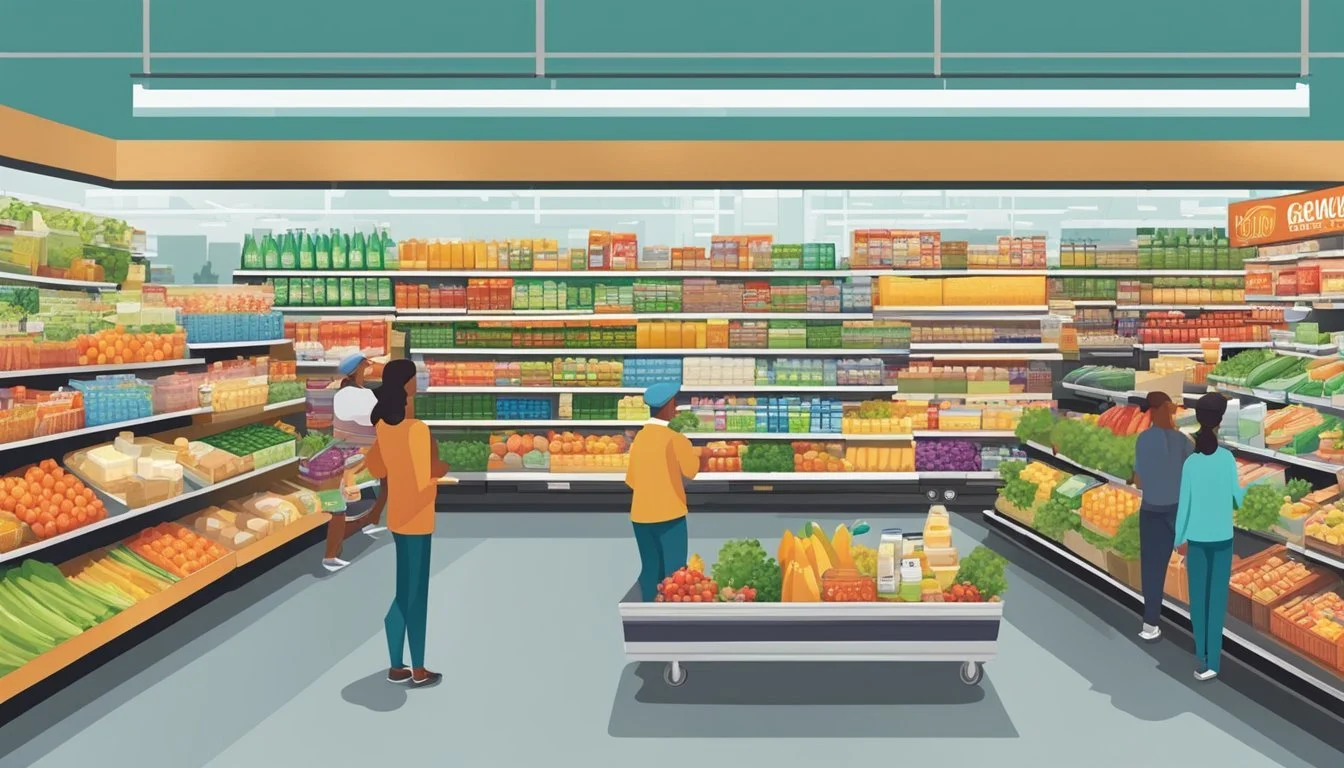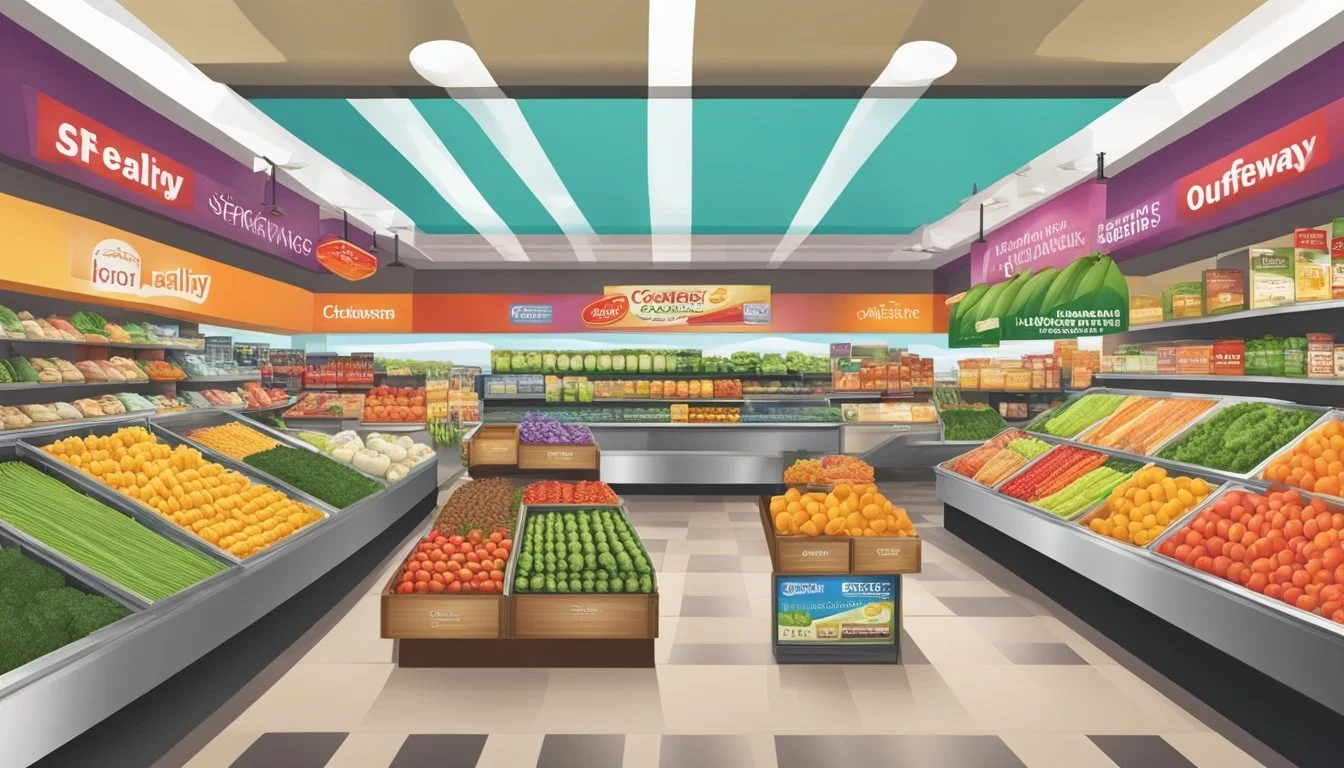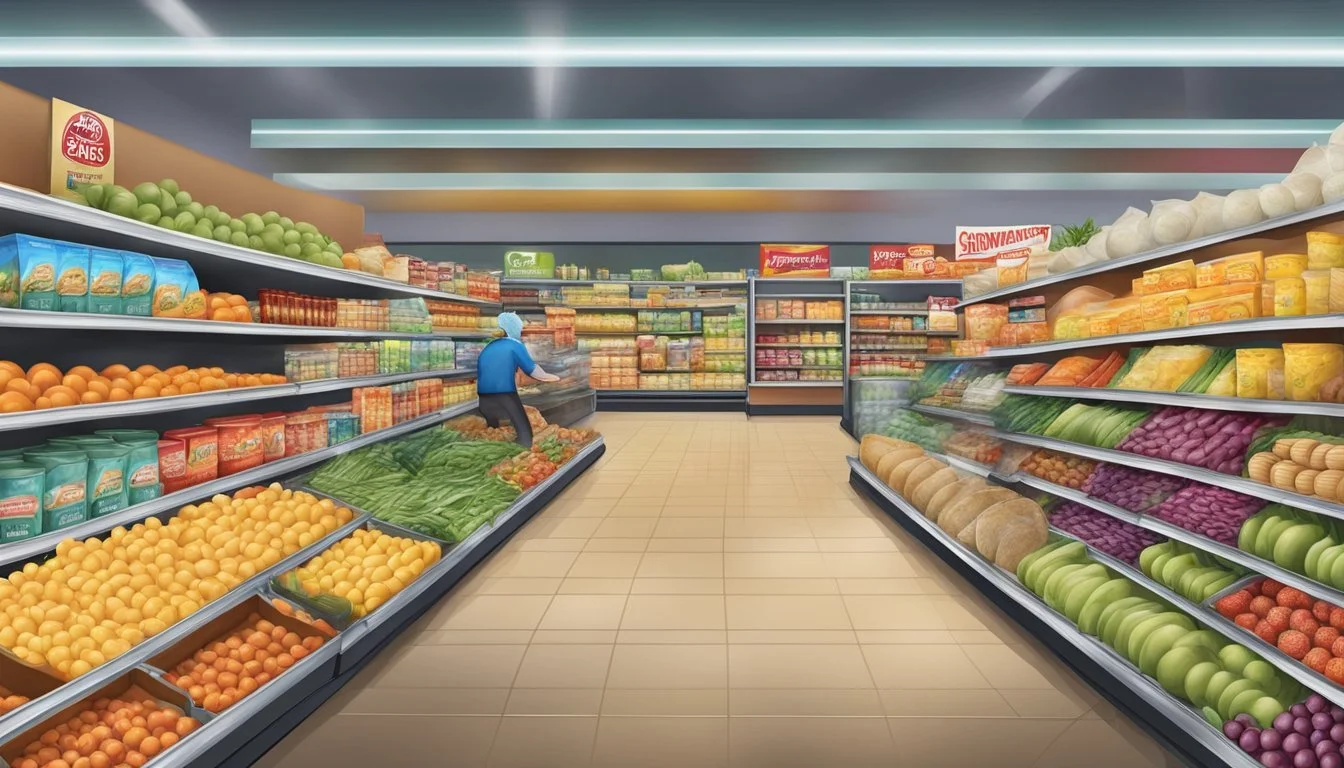Grocery Outlet vs Safeway
A Comprehensive Price and Quality Comparison
Grocery shoppers in search of the best deals often find themselves weighing the options between discount chains and traditional supermarkets. Grocery Outlet and Safeway represent two distinct approaches to selling groceries, each with its own strengths and weaknesses. While Grocery Outlet typically offers lower prices on many items, Safeway provides a more consistent selection and shopping experience.
Grocery Outlet focuses on selling surplus and closeout merchandise at deep discounts, which can lead to significant savings for savvy shoppers. The store's inventory changes frequently, creating a "treasure hunt" atmosphere that some customers enjoy. Safeway, on the other hand, maintains a standard grocery store model with a wide range of products consistently available, often at higher prices.
Price comparisons between the two stores can vary depending on specific items and locations. Some shoppers find success in splitting their grocery trips between Grocery Outlet for bargains on non-perishables and specialty items, and Safeway for fresh produce and branded staples. This strategy allows consumers to maximize savings while ensuring they can find everything on their shopping lists.
History and Business Model
Grocery Outlet and Safeway have distinct origins and business approaches that have shaped their positions in the grocery industry. Both companies have evolved over decades to meet changing consumer needs and market trends.
Grocery Outlet: A Brief Overview
Grocery Outlet traces its roots to 1946 when Jim Read opened Cannery Sales in San Francisco. The store initially sold military surplus items at low prices. Over time, it transformed into a deep-discount grocery store chain.
In 1987, the company adopted the name Grocery Outlet. It later became Grocery Outlet Bargain Market in 2009, reflecting its focus on discounted products.
Grocery Outlet's business model revolves around selling surplus and overstocked name-brand products at steep discounts. This approach allows them to offer prices up to 27% lower than average grocery stores.
The company's unique inventory strategy results in an ever-changing product selection, creating a "treasure hunt" shopping experience for customers.
Safeway: A Snapshot of History
Safeway's history dates back to 1915 when M.B. Skaggs purchased a small grocery store from his father in American Falls, Idaho. Skaggs expanded the business rapidly, opening numerous stores across the western United States.
In 1926, Skaggs incorporated his growing chain under the Safeway name. Under his leadership, Safeway became the largest grocery store chain in the United States.
Safeway's business model focuses on providing a wide range of grocery items, fresh produce, and specialty departments like bakeries and pharmacies. The company aims to offer a comprehensive shopping experience in convenient neighborhood locations.
Over the years, Safeway has adapted to market changes through mergers and acquisitions. In 2015, it became a subsidiary of Albertsons following a private equity acquisition led by Cerberus Capital Management.
Price Analysis
Grocery Outlet and Safeway offer distinct pricing strategies that impact shoppers' budgets. Their approaches to everyday prices, discounts, and sales events differ significantly.
Comparing Everyday Prices
Grocery Outlet typically offers lower everyday prices compared to Safeway. On average, Grocery Outlet's prices are 14-22% below those of traditional supermarkets. For example, a 3-pound bag of apples costs $4.47 at Grocery Outlet, while Safeway charges $4.99. Lettuce prices show an even bigger gap - $1.49 for a 12-oz bag at Grocery Outlet versus $2.79 at Safeway.
Staple items like cucumbers are also cheaper at Grocery Outlet ($0.99) compared to Safeway ($1.29). This pricing difference extends to many other grocery categories, making Grocery Outlet an attractive option for budget-conscious shoppers.
Discounts and Savings
Safeway offers a more robust loyalty program and regular discounts. Their Just for U program provides personalized deals and digital coupons. Shoppers can stack manufacturer coupons with store discounts for additional savings.
Grocery Outlet, in contrast, focuses on consistently low prices rather than a complex discount system. They offer limited-time "WOW deals" on select items, but these change frequently and aren't as predictable as Safeway's weekly specials.
Special Sales Events
Safeway runs regular weekly sales, holiday promotions, and seasonal events. These often feature deep discounts on popular items, sometimes beating Grocery Outlet's everyday low prices.
Grocery Outlet's inventory model is based on opportunistic buying, leading to constantly changing deals. They don't typically advertise sales events, but shoppers may find unexpected bargains on brand-name products.
Both stores offer opportunities for savings, but Safeway's sales events are more structured and predictable. Grocery Outlet's "treasure hunt" approach can yield significant savings for flexible shoppers willing to buy what's available.
Product Assortment and Quality
Grocery Outlet and Safeway offer distinct product selections and quality levels. Their approaches to brands, produce, and perishables cater to different consumer preferences and budgets.
Brand and Generic Products
Grocery Outlet specializes in discounted national-brand items, often featuring surplus or closeout products. This results in an ever-changing inventory of name-brand goods at reduced prices. Safeway, in contrast, maintains a more consistent selection of national brands alongside its own store brands.
Safeway's private labels, like Signature Select and O Organics, offer alternatives to name brands across various categories. Grocery Outlet's inventory is less predictable, with shoppers potentially finding high-end products at steep discounts one week and different options the next.
Organic and Fresh Produce
Safeway typically offers a wider and more consistent selection of organic produce. Their produce departments are often larger, with a focus on presentation and variety. Grocery Outlet's organic offerings can be hit-or-miss, depending on available surplus.
Fresh produce quality at Safeway is generally reliable, with regular stock rotations. Grocery Outlet's produce quality can vary, but often includes good deals on seasonal items. Shoppers at Grocery Outlet may need to inspect produce more carefully and use it quickly.
Meat and Dairy
Safeway provides a full-service meat counter with butchers on staff, offering custom cuts and a wide range of options. Their meat selection includes both conventional and organic choices. Grocery Outlet's meat section is typically smaller, focusing on pre-packaged items and occasional specialty meats at discounted prices.
For dairy, Safeway stocks a broad range of national and store-brand options, including organic milk and eggs. Grocery Outlet's dairy selection can be more limited but often includes good deals on name-brand products. Both stores carry basic dairy staples, but Safeway generally offers more variety in sizes and types.
Shopping Experience
Grocery Outlet and Safeway offer distinct shopping experiences that cater to different types of shoppers. From store layouts to customer service, these retailers have unique approaches that shape how families and individuals navigate their aisles.
Store Layout and Design
Grocery Outlet embraces a no-frills approach with simple shelving and bin displays. This layout encourages treasure hunt-style shopping, where customers can discover unexpected deals. The store's design prioritizes efficiency over aesthetics.
Safeway, in contrast, features a more polished appearance. Wide aisles, organized departments, and clear signage create a streamlined shopping experience. The store's layout is intuitive, making it easier for families to find what they need quickly.
Both stores stock a variety of products, but Grocery Outlet's inventory can be less predictable due to its surplus and closeout model.
Customer Service
Grocery Outlet often has a more personal touch, with many stores independently owned and operated. This can lead to a friendly, community-oriented atmosphere. Staff members are typically knowledgeable about current deals and eager to assist shoppers.
Safeway maintains a professional standard of customer service across its locations. Employees are trained to be helpful and courteous. The chain's larger size allows for more consistent service experiences, which many shoppers appreciate.
Both stores strive to accommodate customer needs, but their approaches differ in execution.
Checkout Efficiency
Grocery Outlet typically has fewer checkout lanes, which can lead to longer wait times during peak hours. However, the smaller store size often means shorter distances from aisles to registers.
Safeway offers more checkout options, including self-service kiosks and express lanes for customers with fewer items. This variety can help reduce wait times, especially for shoppers in a hurry.
Both stores have loyal followings who appreciate their respective checkout processes. Families might find Safeway's multiple lanes more convenient, while bargain hunters may not mind potential waits at Grocery Outlet.
Convenience and Accessibility
Grocery Outlet and Safeway offer different levels of convenience and accessibility for shoppers. Their store locations, operating hours, and delivery options impact how easily customers can access their products and services.
Location and Store Hours
Safeway boasts a larger network of stores, with over 900 locations across the United States. These stores are often found in urban and suburban areas, making them easily accessible to a wide range of customers. Safeway typically operates with extended hours, opening early in the morning and closing late at night. Many locations are open 24 hours a day, providing ultimate flexibility for shoppers.
Grocery Outlet has fewer stores, with approximately 400 locations primarily concentrated on the West Coast. Their stores are often situated in more budget-friendly areas, which can mean slightly less convenient locations for some shoppers. Grocery Outlet stores generally have more limited operating hours compared to Safeway, typically closing earlier in the evening.
Grocery Delivery Options
Safeway offers extensive grocery delivery services through their website and mobile app. Customers can schedule deliveries within specific time slots, often with same-day options available. The service covers a wide range of products, including fresh produce, meat, and household items.
Grocery Outlet's delivery options are more limited. While some individual stores may partner with third-party delivery services, it is not a standardized offering across all locations. This can make it challenging for customers who rely on delivery services to access Grocery Outlet's discounted products.
Loyalty Programs and Customer Incentives
Grocery Outlet and Safeway offer distinct loyalty programs to attract and retain customers. These programs provide various benefits and rewards to incentivize repeat shopping and enhance the overall customer experience.
Membership Benefits
Safeway's loyalty program, Just for U, is free to join and offers digital coupons, personalized deals, and gas rewards. Members can save their preferences and shopping lists in the mobile app for convenient access. Grocery Outlet, in contrast, does not have a traditional loyalty program. Instead, they focus on consistently low prices across all products.
Safeway's program allows customers to earn points on purchases, which can be redeemed for discounts on fuel at participating gas stations. This feature is particularly attractive for frequent shoppers who drive regularly.
Rewards and Exclusive Deals
Safeway's Just for U program provides members with exclusive discounts and personalized offers based on their shopping history. These deals are updated weekly and can be loaded directly to the member's account for easy redemption at checkout.
Grocery Outlet, while lacking a formal rewards system, offers significant discounts on brand-name products through their unique business model. They source overstock and closeout items, passing the savings directly to customers.
Safeway occasionally runs promotional events where members can earn bonus points or receive special discounts on select items. These limited-time offers can provide substantial savings for savvy shoppers.
Both stores aim to create a loyal following through their distinct approaches to customer incentives, whether through structured rewards or consistently low pricing.
Market Comparison Against Other Retailers
Grocery Outlet and Safeway face stiff competition from a diverse range of retailers in the grocery market. Their pricing strategies and product offerings are constantly measured against other major players, specialty stores, and emerging online platforms.
Grocery Outlet and Safeway vs. Walmart and Target
Walmart consistently offers lower prices than both Grocery Outlet and Safeway. Studies show Walmart's prices average about 20% below the industry standard. Target, while not as cheap as Walmart, still competes strongly on price and offers a more upscale shopping experience.
Grocery Outlet's discounted model allows it to match or beat Walmart's prices on many items. However, its inventory is less consistent due to its opportunistic buying strategy.
Safeway tends to have higher prices than these competitors but counters with frequent sales and a loyalty program.
The Place of Local and Specialized Markets
Trader Joe's and Aldi challenge both Grocery Outlet and Safeway with unique product offerings and competitive pricing. These stores appeal to budget-conscious shoppers seeking specialty items.
Whole Foods targets a different market segment with its focus on organic and premium products. While generally more expensive, it competes with Safeway's higher-end offerings.
Local markets carve out niches by providing fresh, locally-sourced products and personalized service. They often can't match the prices of larger chains but attract customers with quality and community ties.
Competing with Online Giants
Amazon and its subsidiary Whole Foods have disrupted the grocery industry with online ordering and quick delivery options. Amazon Prime members receive additional discounts at Whole Foods, intensifying competition.
Grocery Outlet lacks a robust online presence, which limits its ability to compete in the e-commerce space. Safeway has invested in online ordering and delivery services to stay competitive.
Walmart and Target have leveraged their extensive store networks to offer convenient pickup options, blending online and offline shopping experiences. This hybrid model poses challenges for both Grocery Outlet and Safeway in retaining tech-savvy customers.
Community Impact and Sustainability
Grocery Outlet and Safeway take different approaches to community engagement and environmental stewardship. Their practices influence local economies and sustainability efforts in distinct ways.
Local Economic Contributions
Grocery Outlet operates on an independent owner-operator model, fostering local entrepreneurship. This structure allows store owners to tailor offerings to community needs and preferences. Safeway, as part of a larger corporate entity, provides stable employment opportunities across its network of stores.
Both chains support local food banks and charitable organizations. Grocery Outlet runs an annual Independence from Hunger campaign, collecting food donations for local charities. Safeway participates in regional hunger relief programs and supports various community initiatives through its foundation.
Grocery Outlet often stocks products from local suppliers, boosting regional economies. Safeway's larger scale enables it to work with both national brands and local producers, depending on the store location.
Environmental Considerations
Grocery Outlet focuses on reducing food waste by selling surplus inventory and close-to-expiration products at discounted prices. This practice keeps edible food out of landfills. The company has implemented energy-saving measures in 98% of its stores, using timed lighting and heating systems to lower consumption.
Safeway has made strides in sustainable practices across its operations. The chain has implemented recycling programs for plastic bags and packaging materials in many locations. Some Safeway stores feature energy-efficient refrigeration systems and LED lighting to reduce their carbon footprint.
Both retailers offer reusable shopping bags to customers, encouraging a reduction in single-use plastics. Safeway has expanded its organic product lines, responding to consumer demand for sustainably sourced items. Grocery Outlet's model of selling overstock products indirectly contributes to reducing packaging waste in the supply chain.
Final Thoughts on Grocery Shopping Choices
Choosing between Grocery Outlet and Safeway involves weighing various factors. Price-conscious shoppers may find Grocery Outlet appealing, with potential savings of up to 22% compared to average store prices.
Safeway offers a wider selection and more consistent inventory, which can be important for those with specific dietary needs or preferences. Its loyalty program provides additional savings opportunities.
Location and convenience play a role in decision-making. Safeway has more stores, potentially offering easier access for some consumers.
Product quality and freshness can vary between the two. Grocery Outlet's rotating inventory may include unique finds, while Safeway maintains a more standard selection.
Consumer surveys and research findings indicate that personal priorities greatly influence store choice. Some value cost savings above all, while others prioritize product variety or shopping experience.
Ultimately, the best choice depends on individual needs, budget constraints, and shopping habits. Many consumers opt to shop at both stores, taking advantage of each retailer's strengths for different purchases.







